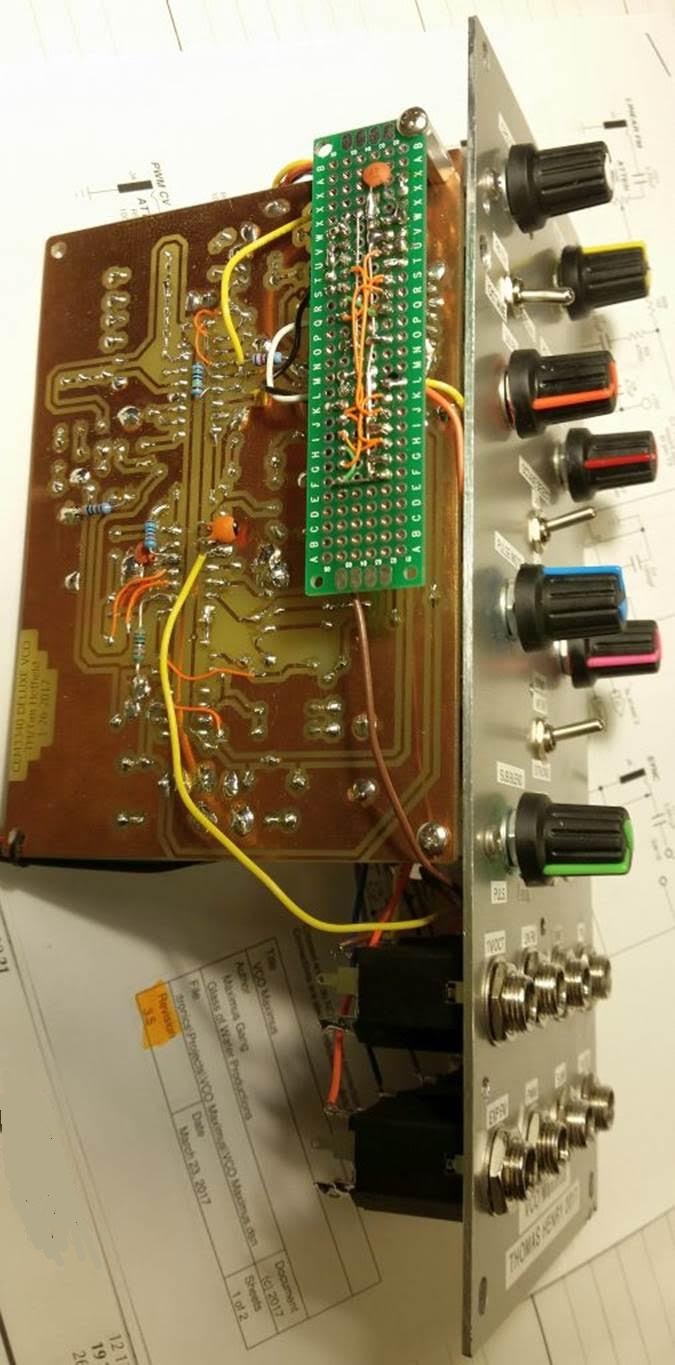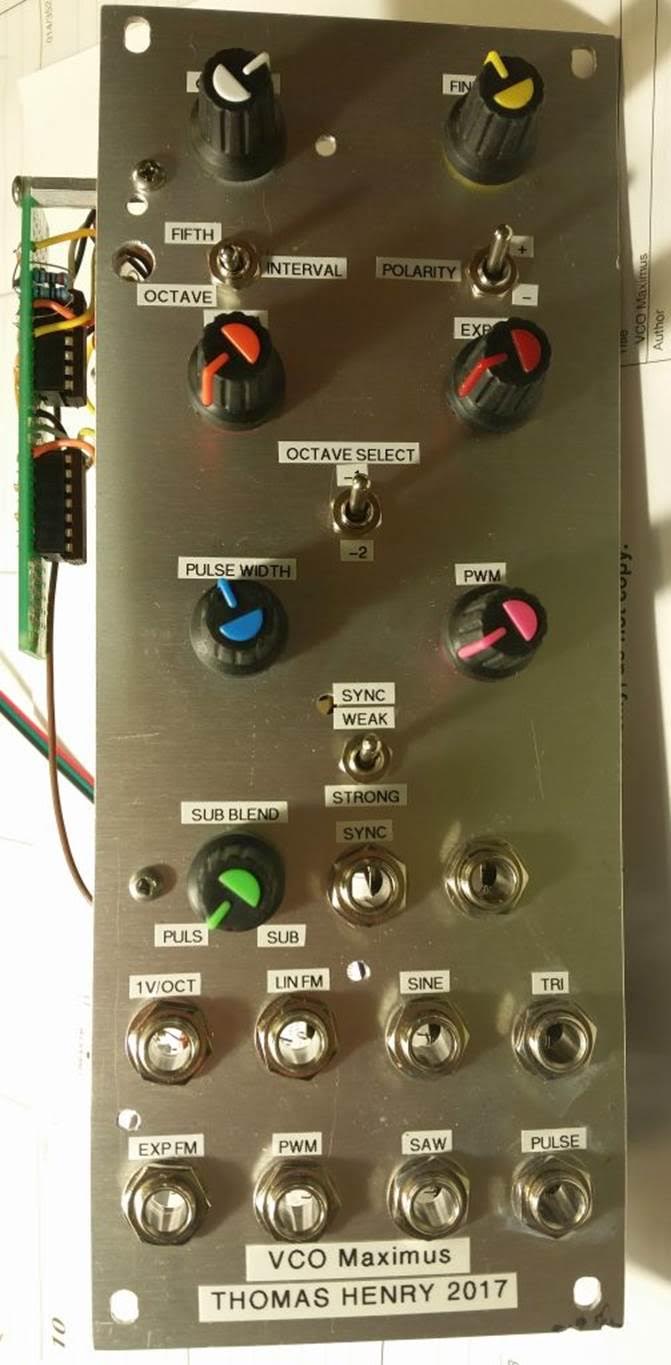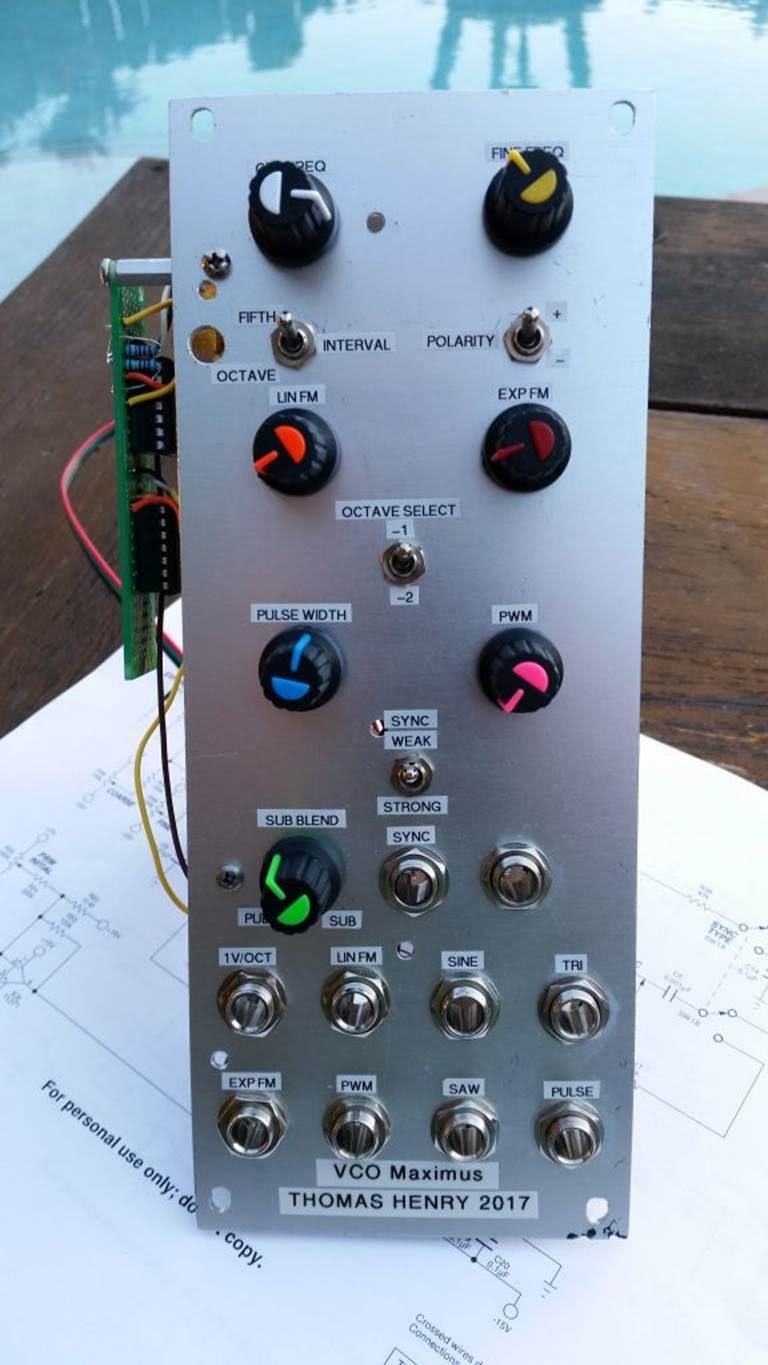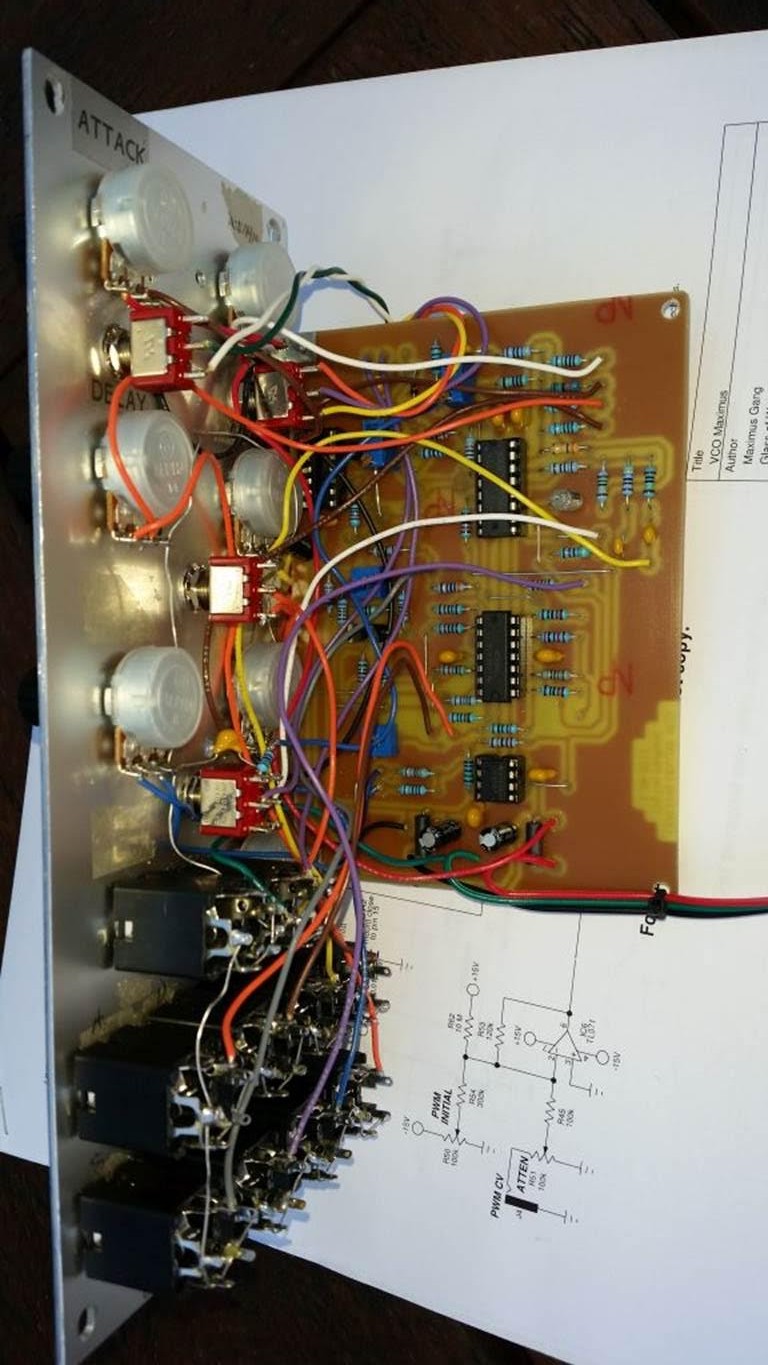The VCO Maximus Story
The CEM3340 Enters the 21st Century
Digital Killed the Analog God
In the early-to-mid-1980's the music synthesizer world experienced a revolution of earth-shaking proportion: digital technology burst upon the scene with the exciting promise of rock-solid precision and stability, new sounds, and compact design that not only made the product more reliable, but eminently more profitable for the manufacturer. Arguably, it was the Yamaha DX7 that nearly single-handedly transformed the world of synthesizers and of music itself. No longer did musicians have to deal with cranky analog synthesizers with their limited number of waveforms, comparably crude preset functions and often finicky tuning. Everyone and their dog (and in some cases, cat) had a DX7. In what now seems a very short time, the analog synthesizer was kicked to the curb, and, before long, became rare as hens teeth on the new market, and used prices plummeted.
However, by the 1990's, something seemed to be missing. The digital synths were (and still are) amazing, but, at the same time, something seemed to have been lost. Many people began to realize that those cranky analog synths had something that the digital synths never quite seemed to emulate. Not to get too philosophical here, but the analog synth, for all its shortcomings, had an immediacy, a growl, and an ethereality that the digital synthesizers could not touch. Prices for the old, used analog dinosaurs that escaped the trash dumpsters and compacters began to rise. More and more people (myself included) began to actually build analog synthesizers. With the advent of the internet, these people came together, and soon boutique manufacturers of analog synth products and effects sprang up. Now, in the twenty-teens, major manufacturers are getting back in the game and are commercially producing analog synthesizers and effects.
Enter the CEM3340
So now we come to the crux of this windy diatribe:
The premature demise of all synths analog also incurred the collateral damage of the parts used to build them having disappeared as well. I remember stories of tubes of SSM2040's being tossed in the trash (it was very difficult to type that sentence from a fetal position). Hey - who needed these analog filters when a digital synth could do anything it wanted with a signal? It didn't need no stinking filter!
Nothing triggers my inner Luddite like the reminders of the of the golden age of analog. The PMI SSM2040, Reticon SAD1024, and UA726 (allegedly felled by advances in guided missiles) all are legendary. But the one IC that sits atop the heap of lamented, departed silicon is the incomparable Curtis Electromusic CEM3340 VCO. Legions of booty have been shaken, countless heads have been bobbed, and innumerable minds have been blown listening to music that, at its core, began life as a waveform generated by this nearly mythical integrated circuit.
Designed by the genius that was Doug Curtis, the CEM3340 was a rock solid, thermally stable Voltage Controlled Oscillator. If a designer could get his/her hands on a CEM3340, gone was the need to laboriously match transistors or search vainly through the ever dwindling selection of matched transistor pairs available to mere mortals. Gone was the need to find elusive tempco resistors or deal with the heartbreak and mess of thermal compound. Gone was the worry that the damn thing would drift with temperature. All of this was possible with a minumum of parts; so few parts, in fact, that the CEM3340 helped make possible the polyphonic analog synthesizer. Mr. Curtis' design made all of these things a reality. And, like the SSM2040, SAD1024 and UA726, it fell to the random blade of digital technology (to paraphrase Neil Young).
But, that was then; this is now...
Thomas Henry Rides Again
To my utter delight and amazement, Curtis Electromusic, which morphed into OnChip Systems, has re-issued the venerable CEM3340.
When Thomas Henry contacted me from his fortress in the frozen north, asking if I was interested in testing a new design using the CEM3340, I was more than on-board. For me, the CEM3340 was the ultimate device I had pined years for, and, now, not only was it available again, but Thomas was preparing to whip up one of his famous designs using the IC!
I soon found I was in good company. Also on the team was Tim Heffield, a think-outside-the box brilliant guy who can whip out a prototype in the time it takes most people to take a shower, and the inestimable Matthias Hermmann, aka 'Fonik' of Fonitronik (if you're unfamiliar with Fonitronik, do check out the link. Matthias is into some really cool stuff).
Through the next several weeks, the design got better and better, providing challenges that were overcome one-by-one. I could barely keep up with the gang, bumbling through my breadboard after years of synth-diy atrophy. What popped out of the end of the process is one helluva cool VCO that outputs sine, triangle, sawtooth and pulse waveforms. But wait - there's more! The pulse output is armed to the teeth with not only a suboctave, but a lower fifth and suboctave fifth, blendable with the Blend control. Of course, the VCO sports Expontential and Linear CV inputs and has Strong and Weak sync. I will tell you, the whole thing fit on one of my smaller breadboards, and it is a rock solid, very accurate VCO. It's a new classic.
The full schematics and parts list is on this website. To make things easy for me, and more interesting for you, Thomas sent me the description and theory of the circuit in his own words.
Tim Heffield's Audio Sample
Tim Heffield created and posted this marvelous composition on electro-music. It's a great demonstration of the VCO Maximus in action. Here is what Tim had to say of the song:
Last night spent about four hours putting together a music demo of the VCO Maximus. I used a midi file from the web composed by Morton H. Svendsen in 1997 called "Planet Arcturus".
The MP3 file is comprised of eleven tracks of multi-recording with two of the tracks being drums. All of the voices are from the VCO Maximus prototype shown on the Birth of a Synth website, except the drums. I also used a 2040 VCF clone and other synth modules but no other VCOs.
The Maximus was tuned an octave lower for the first bass track, and then retuned to A 440 using a guitar tuner for all of the other tracks. It was not re-tuned for the whole four hours of recording.
Tim Heffield's Prototype
Tim Heffield's contribution to the project is not to be underestimated. It was Tim who came up with the small-cap solutions to the sawtooth negative-going spike and the cap that eliminated the propagation delay glitch on the input of the CD4070 (reference Thomas' writeup). It was also Tim who suggested the fifth/suboctave output as an interesting thing to do with that (at the time) unused half of the CD4013 lying naked on the schematic.
During the development, Tim was going the extra step of protyping the design using a PCB he'd etched himself with protoboard attachments he would modify when a question came up. The PCB was based off of Thomas' 1981 "VCO Deluxe" design, and Tim just kludged the VCO Maximus features to it. Didn't I tell you he was good? He had this mounted behind an old spare panel. He told me it was pretty ugly, but to me, it's a thing of beauty.
By the way, the "VCO Deluxe" design is available in Thomas' Electronic Music Circuits: The Reprints, which is available here, but be aware that, in Thomas' view, VCO Maximus is a superior design.
 |  |  |
| Tim's Prototype With Daughter Board | Inside View of Tim's Prototype | Tim's Improvised Prototype Front Panel |
More pictures!



